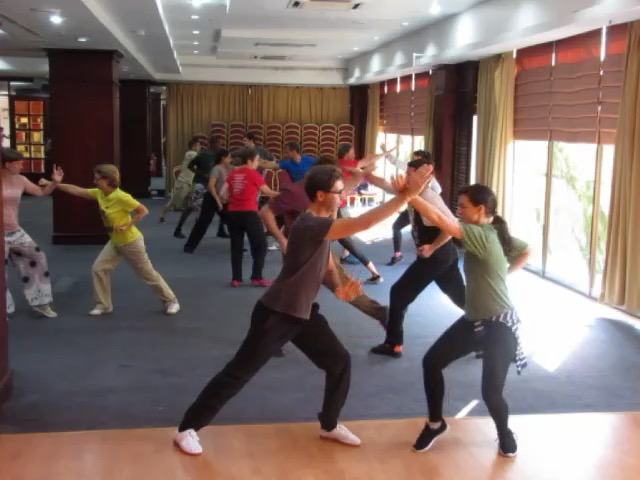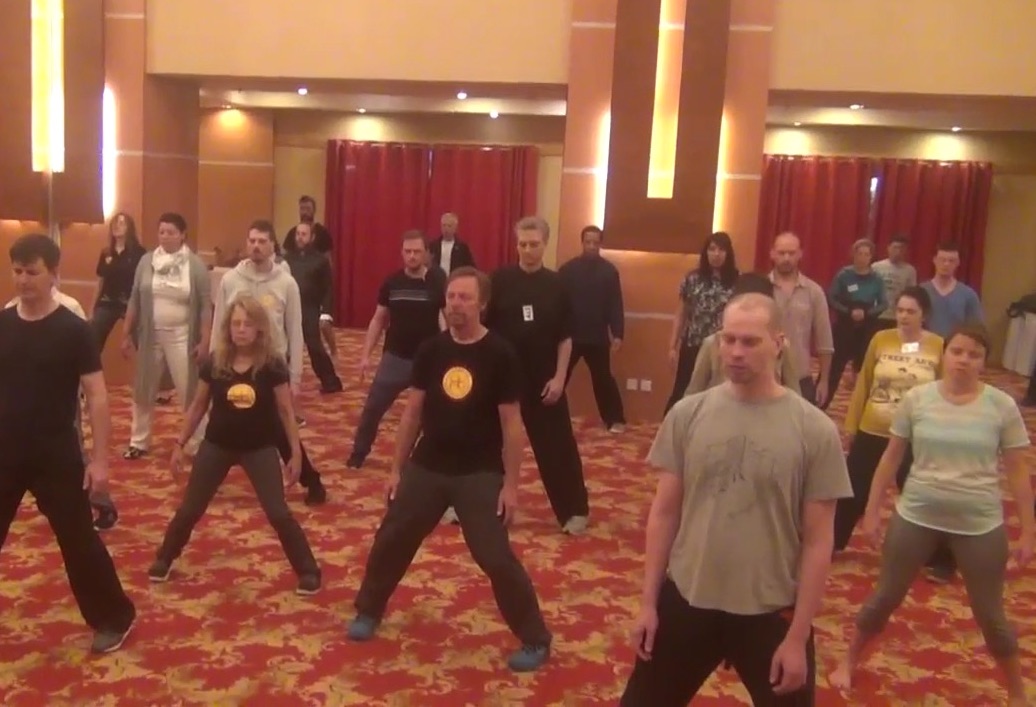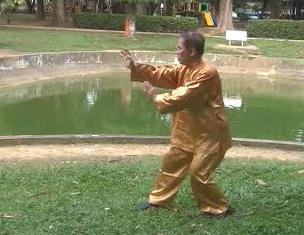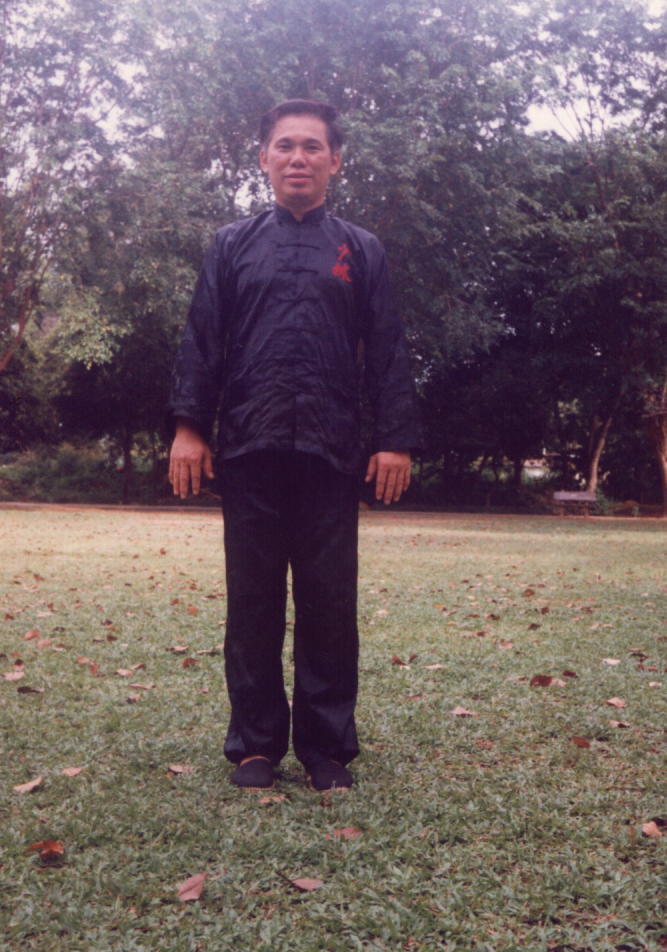SELECTION OF QUESTIONS AND ANSWERS
JULY 2022 PART 1
Note
: The Q & A Series will end on Apr 25 Part 1, but he Series will carry on as usual.

Shaolin Kungfu
Question 1
This is Brandon again. I am currently taking Karate which I know is not Kung Fu but I have a question. Is it a good idea to stop drinking alcohol?
— Brandon, USA
Answer
Karate is nowhere compared to kungfu. Here I am speaking of ideal kungfu.On the other hand, most "kungfu" practitioners are beaten by Karate practitioners. These "kungfu" practitioner do not practice genuine kungfu; they merely practice kungfu demonstration and use martial arts, like Karate, Taekwondo and Kickboxing, for sparring, and they spar like children.
Genuine kungfu is very rare; high level genuine kungfu is rarer still. What we practice at Shaolin Wahnam is genuine, high-level kungfu.
It is common knowledge that many Karate grandmasters went to China to learn kungfu. But what they learned was third-class kungfu. Even second class and first class kungfu were not taught to ordinary students. Masters reserved first class kungfu to be taught only to a very few disciples.
Some time ago I asked you to attend my Intensive Chi Kung Course, and then my Intensive Shaolin Kungfu Course. You should read The Unbelievable Chi Kung Course and The Wonderful Intensive Shaolin Kungfu Course.
Why do I say that the Intensive Chi Kung Course and the Intensive Shaolin Kungfu Course we teach are genuine, high-level chi kung and Shaolin Kungfu? You have to read my webpages to get the answers.
As to your question in your email, my answer is yes, it is a good idea to stop drinking alcohol for spirituality concerning the martial arts. Not drinking alcohol until one becomes intoxicated, and not telling lies are two of the five major rules in the Buddhist religion. If a person drinks alcohol but does not become intoxicated, it is alright.
Actually, Buddhism is not a religion as the West conceptualizes it to be. According to the Buddha, people become Buddhists if they
1. Avoid all evil
2. Do good
3. Cultivate the mind.
Question 2
We would like to introduce you to the Shaolin Wahnam Homework Project.
— Sifu Mark Harnisch, Germany
Answer
Your questions are interesting, and the proposal you have suggested is wonderful.
Low, medium and high level chi kung or kungfu, negative emotions in pairs of organs, the 18 Lohan Hands, Four Gates, and life is suffering are important topics.

"Small Universe"
Question 3
What is meant by transforming jing to chi? How do you do this?
— Bala, India
Answer
Transforming "jing" to "chi" (or "qi" in Romanized Chinese) means changing "substance" to "energy", like changing food to energy while eating a meal.
This is what we do every time we take a meal. Another example of changing substance to energy is when a chi kung practitioner practices Abdominal Breathing.
Question 4
How do you know if someone has attained the Small Universe? Can your son Wong Chun Nga, who has psychic sight, sees if someone has attained the Small Universe?
Answer
A saying mentions that one who has attained the "Small Universe" will overcome hundreds of diseases. Hence, a person who has attained the "Small Universe" will not be sick. He will also be very lucky, as "hou yun qi" in Romanized Chinese means "lucky".
Having attained the "Small Universe" means a lot of chi flows continuously in his governing meridian and his conceptual meridian round his body, making him healthy, full of vitality, giving him peak performance and spiritual joys irrespective of religion, and making him very lucky.
My eldest son, Sifu Wong Chun Nga, has attained the "Small Universe". I am not sure whether he can see chi flowing continuously round a person who has attained the "Small Universe". He stays in a different house in Sungai Petani, and he is now teaching chi kung using his mobile phone. You can contact him if you want to learn chi kung from him.

"Santi Shi"
Question 5
Wishing you and your family a wonderful year ahead
— Max, Malaysia
Answer
Thank you for your kind words. May 2021 bring you peace and happiness every day. (This year it is 2022. There is a long waiting list, and the answers are only released now. Topical questions are sent to enquirers immediately.)
Sometime later in 2021 some intensive courses will be offered. You may take part in these courses, especially Shaolin Kungfu and Small and Big Universe courses.
I heard that Copthorne Orchid Hotel is no longer operational. Many business units are affected. It is indeed a pity. Copthorne Orchid Hotel offered a lovely place, and the price was reasonable.
Question 6
I'm unclear about the proper culture of courtesy. I believe I should call Chun Nga "Siheng" as I've learnt from you directly. But it is disrespectful to address him as "Siheng" while in his class in front of his students. Should I address him as "Sifu" instead?
Answer
It is alright if you address my eldest son, Sifu Wong Chun Nga, as "Siheng" as you have learned from me in an Intensive Chi Kung Course in 2017. Your parents, if they learn from my eldest son, should address him as "Sifu". All those who learn from the same master will address him or her as "Sifu", even when she is a female master.
I travelled about 9 months a year giving regional courses, and it is very important that students differentiate between the intensive and regional courses I give, and the regular classes they take from their teachers. They should practice at about 30% or less, which is actually very "high" in their regular classes. My intensive and regional courses take only a few days or hours, but their regular classes take years if they practice genuine chi kung.
As my student, who is a famous master, Sifu Piti, teaching international presidents and vice-presidents, has rightly said that grand-students are more pampered than students. My "thou-shak" (i.e. students of my grand-students) have become masters.

"Wuji" stance
Question 7
I now practise Chun Nga's set and "santi shi" on alternate days and I feel fine. However, I'm very uncomfortable breaking my daily "santi shi" practice. Will any force I happened to have built up deteriorate?
Answer
"Lifting the Sky", "Rotating Head", "Dancing Butterfly", "Nourishing Kidneys" and "Rotating Knees" are good exercises. I really don't mean to be presumptuous. They are good chi kung exercises if they are learnt in Shaolin Wahnam. In most other schools, practitioners merely practice them as gentle, physical exercise, and gentle, physical exercise does not give good health, vitality and longevity. That is the reason why many practitioners are still weak and sickly.
A good way to lower your potential of practice to make it 30% or less, is as follows. Take my teaching at intensive or regional courses as 100%. If you half this 100% to 50%, and again half this 50% to 25%, it is close to 30%. If you find that 25% is still high, you have to lower your potential again. You have to lower your potential, which is still "high" in regular classes.
You can practice your "santi shi", but do so slowly and carefully. You have to observe how you feel. If you find your potential is "high", you just have to lower it. You perform Sifu Wong Chun Nga's set and your "santi shi" on alternate days. You will regain the force of your "santi shi", but it will take time.
On the days you practice your "santi shi", do so for only 5 minutes. Then observe how you feel. If you find it is alright, you should repeat your "santi shi" for only 5 minutes for two days. If you find it is alright, you can increase to 6 minutes -- i.e. the 8th day if you practice both Sifu Wong Chun Nga's set and "santi shi". In this way you can gradually increase your time and practice the "santi shi" normally.
Question 8
I remember reading you saying the Wuji stance can be practised as zhan zhuang and also build significant internal force. Out of curiosity, what's the difference between the internal force from the Wuji stance and Santi shi? What will happen to my kungfu if I only practice Wuji stance instead of Santi shi?
Answer
The stances in "zhan zhuang" are different. For example, the "Wuji Stance" is the easiest. It is not just standing upright with feet together, but one has to be relaxed and focused. The "Horse-Riding Stance" is the hardest, but many students in Shaolin Wahnam find that they can enter Zen in the "Horse-Riding Stance". The "Bow-Arrow Stance" and the "False-Leg Stance" are for combat.
The "santi shi", or "Three-Body Stance", is for the Expansion Mode and the Correspondence Mode. The "Horse-Riding Stance" in Shaolin Kungfu as well as the "Three-Circle Stance" in Taijiquan are systematic whereas the "Three-Body Stance" is not. Later I read in a classic that the Expansion Mode and the Correspondence Mode channel energy to the wrist so that the "Three-Body Stance" needs not be systematic.
The "Wuji Stance" enables you to be relaxed and focused. But you can channel energy or force to your wrist much faster using the "santi shi" or "Three-Body Stance".
LINKS
Selected Reading
- Past Masters Compared to Modern Day Fighters
- The Legacy of Shaolin Wahnam
- What is Zen
- A Girl from Szechuan
- Inspiration
